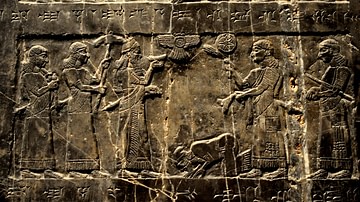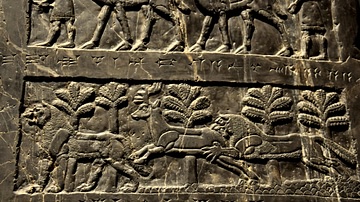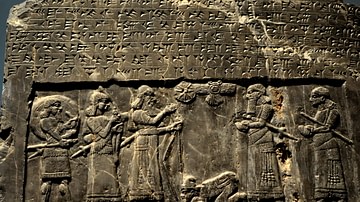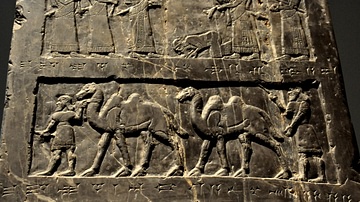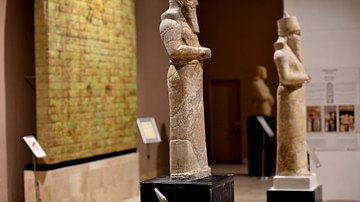Illustration
This obelisk was erected as a public monument in 825 BCE at a time of civil war. The relief sculptures glorify the achievements of King Shalmaneser III and his commander-in-chief . It lists their military campaigns of 31 years and the tribute they exacted from their neighbors. It is the most complete Assyrian obelisk yet discovered, and it is historically significant because it is thought to display the earliest ancient depiction of a biblical figure - Jehu King of Israel. Reign of Shalmaneser III, 858-824 BCE, neo-Assyrian era, from Nimrud (ancient Kalhu), northern Iraq, Mesopotamia, the British Museum, London.
About the Author
Cite This Work
APA Style
Amin, O. S. M. (2014, February 04). The Black Obelisk of King Shalmaneser III. World History Encyclopedia. Retrieved from https://www.worldhistory.org/image/2289/the-black-obelisk-of-king-shalmaneser-iii/
Chicago Style
Amin, Osama Shukir Muhammed. "The Black Obelisk of King Shalmaneser III." World History Encyclopedia. Last modified February 04, 2014. https://www.worldhistory.org/image/2289/the-black-obelisk-of-king-shalmaneser-iii/.
MLA Style
Amin, Osama Shukir Muhammed. "The Black Obelisk of King Shalmaneser III." World History Encyclopedia. World History Encyclopedia, 04 Feb 2014, https://www.worldhistory.org/image/2289/the-black-obelisk-of-king-shalmaneser-iii/. Web. 19 Apr 2025.



